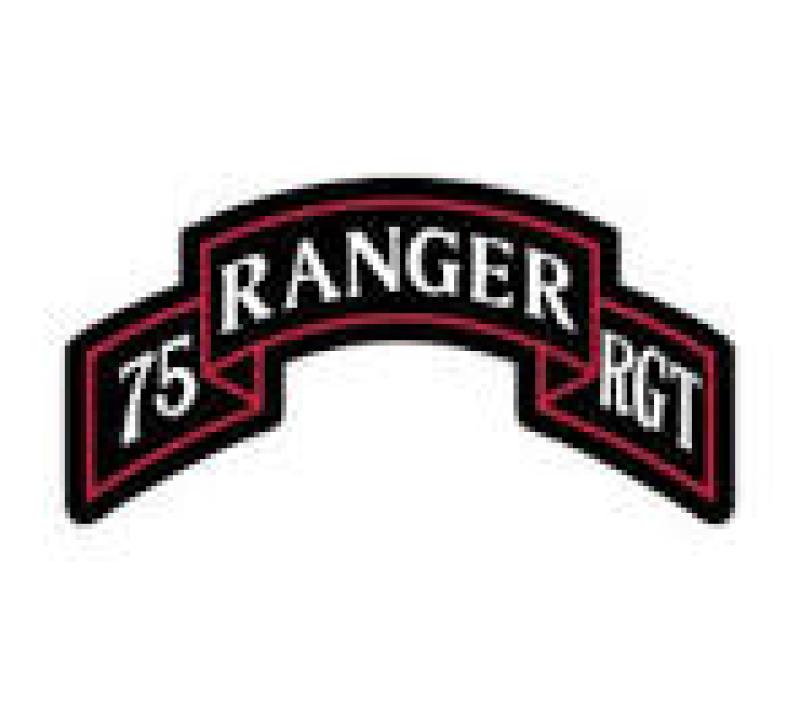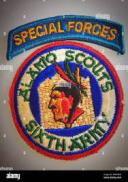Army Ranger Veterans of World War II Receive Congressional Gold Medal
Category: News & Politics
Via: kavika • 2 years ago • 4 commentsBy: Stavros Atlamazoglou (Business Insider)


The current active duty Ranger unit is the 75th Ranger Regiment.
On January 30, 1945, some 120 Alamo Scouts and Rangers from the 6th Ranger Battalion, supported by 200 Filipino guerrillas, launched a rescue operation. To get to Cabanatuan, the commandos had to march 30 miles behind enemy lines.
The Filipino guerrillas were an excellent fighting force and the general population suffered greatly under Japanese occupation. The guerrillas were tortured and executed when captured.
The Alamo Scouts is one of the smallest and most secretive units in US military history. In two and half years they completed 115 missions behind enemy lines. In addition to Cabanatuan, they completed two other behind enemy lines recuse missions.
Their unit patch is highly valued by collectors and one recently sold for $5,000. Remember the total unit was only 138 men. There are no members of the Alamo Scouts alive today.

A special salute to Cpl. Francis H. LaQuier.
Link to the story of the Alamo Scouts....https://indiancountrytoday.com/archive/remembering-the-alamo-scouts-many-american-indians-fought-in-world-war-ii

US Army Rangers run through a wall of fire training in 1943. Hulton-Deutsch Collection/CORBIS/Corbis via Getty Images
- The White House and Congress recently recognized the US Army Ranger veterans of World War II.
- Rangers played a crucial role in some of the war's most important battles, including D-Day.
- Of the 7,000 Rangers who fought in World War II, only a dozen are still alive to receive the award.
The White House and Congress recently recognized the few remaining World War II veterans of a legendary special-operations unit.
In June, President Joe Biden signed legislation awarding the Congressional Gold Medal to US Army Rangers who fight in some of the war's most important battles.
The medals, one of the US's highest civilian awards, "is going to go to US Army Ranger veterans of World War II — Rangers who played a crucial role in the D-Day invasion in Normandy," Biden said in a ceremony on June 7.
"This elite group once numbered 7,000, but now it's down to 12. A dozen left. On behalf of our nation, we want to thank them for their heroism and their service," Biden added.
The Rangers forged their legacy on the plains of Europe and in the jungles of Asia during World War II, and two operations best reflect their contribution to the Allied victory.
Pointe du Hoc
The ropes and ladders the Rangers used to scale the cliffs of Point du Hoc, seen in a photo released on June 12, 1944. US Navy
One of the most daring operations in Ranger history took place during the D-Day landings on June 6, 1944.
Allied forces landed on five beaches — Sword, Juno, Gold, Omaha, and Utah. US troops were responsible for Omaha and Utah beaches, which are separated by Pointe du Hoc, a strategically located cliff overlooking both beaches.
The Germans had fortified Pointe du Hoc with heavy artillery that could be deadly to US troops on the beaches and to Allied warships supporting the invasion.
To neutralize the German threat, Allied commanders assigned Lt. Col. James Rudder's 2nd Ranger Battalion and its 200 Rangers to take down the German position before the landings began.
US troops relieve the US Army Rangers at Pointe du Hoc as German prisoners are led away, June 8, 1944. Archives/Wikimedia Commons/Public Domain
On D-Day, Allied aircraft and ships launched more than 630 tons of munitions against Pointe du Hoc in an attempt to suppress the German defenders ahead of the main landings. The bombardment failed to destroy the German guns and fortifications and tore up the ground and cliffs around the German positions, complicating the Rangers' assault plans.
To get to the German positions, the Rangers had to climb sheer 100-foot cliffs while under German fire. The US commandos used ropes and ladders to get to the top, where they stormed and destroyed the artillery emplacements. However, the Germans counterattacked in force, pinning down the Rangers.
By the second day of the invasion, the Rangers had suffered more than 50% casualties and had only about 90 men still able to fight. The Germans tried to dislodge the Rangers and throw them back into the water with repeated counterattacks, but the American commandos held fast, and on the third day of the invasion, reinforcements finally arrived to relieve them.
Cabanatuan
US Army Rangers who participated in the raid on the Cabanatuan prison camp to free Allied prisoners of war, February 16, 1945. Bettmann/Getty Images
Army Rangers distinguished themselves again a few months later and thousands of miles away.
At the end of 1944, the tide of the war in the Pacific was changing in favor of the Allies. Japan's army and navy were on the defensive, and Allied forces were recapturing island after island. Amid their retreat, Japanese troops continued and, in some cases, increased their war crimes.
In December 1944, as US troops were advancing in the Philippines, Japanese troops shot or burned alive 139 Allied prisoners of war, many of whom had survived the infamous Bataan Death March.
A few Americans escaped the killing and reported the atrocities to approaching Allied forces. US commanders realized that other Allied prisoners of war faced imminent execution. The Cabanatuan prison camp in the Philippines was the largest in the region, holding more than 500 Allied POWs.
On January 30, 1945, some 120 Alamo Scouts and Rangers from the 6th Ranger Battalion, supported by 200 Filipino guerrillas, launched a rescue operation. To get to Cabanatuan, the commandos had to march 30 miles behind enemy lines.
US troops liberated from Cabanatuan prison by US Army Rangers wait for transfer to a base hospital. CORBIS/Corbis via Getty Images
Once in place, they attacked the camp from the front and flank, catching the Japanese guards unawares. The surprise was complete, and shortly Rangers had rescued all the Allied POWs there.
The Cabanatuan raid is the largest prisoner-of-war rescue in US special-operations history.
One of the Rangers present, Maj. Arthur "Bull" Simons, become a legend in the special-operations community and took in Operation Ivory Coast, the special-operations prisoner-rescue attempt at Son Tay prison camp in North Vietnam. US Special Operations Command recognizes its top member every year with the Bull Simons Award.
Today, the legacy of those commandos lives on in the 75th Ranger Regiment, the world's premier light infantry special-operations unit and an integral part of the US special-operations arsenal. Rangers are the go-to special-operations unit for most contingencies and are one of the few US military units that has been continuously deployed since the September 11 attacks.
Stavros Atlamazoglou is a defense journalist specializing in special operations, a Hellenic Army veteran (national service with the 575th Marine Battalion and Army HQ), and a Johns Hopkins University graduate.



I just found this article on the one particular Ranger. What a must read article.
A Long-Forgotten World War II Ranger Will Receive 2 Congressional Gold Medals
That would make a good movie.
D Day at Point De Hoc is on Amazon prime.
''The Great Raid'' is a movie about the rescue at Cabanatuan
Nice, too bad it took so long.